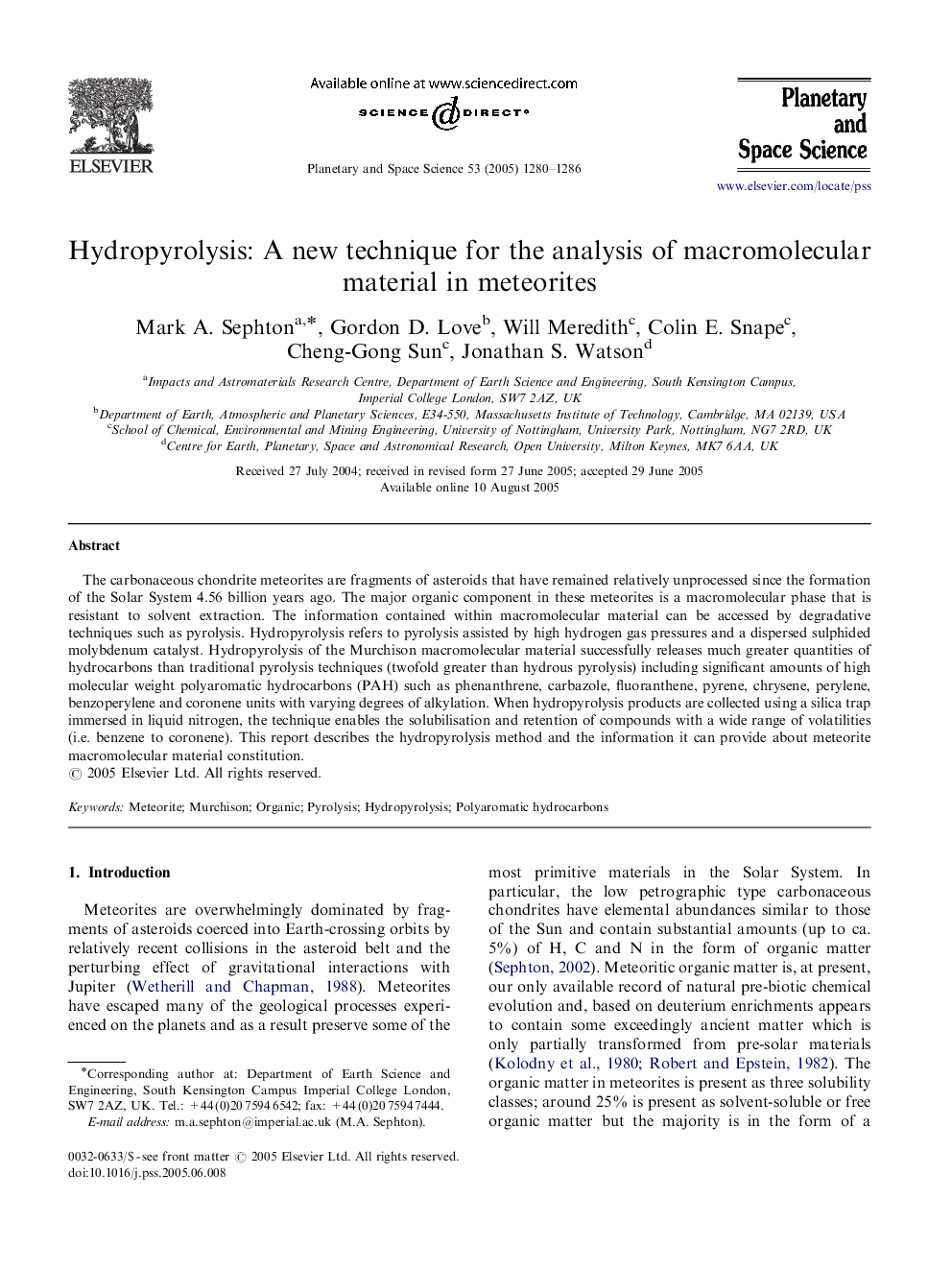| Article ID | Journal | Published Year | Pages | File Type |
|---|---|---|---|---|
| 10705444 | Planetary and Space Science | 2005 | 7 Pages |
Abstract
The carbonaceous chondrite meteorites are fragments of asteroids that have remained relatively unprocessed since the formation of the Solar System 4.56 billion years ago. The major organic component in these meteorites is a macromolecular phase that is resistant to solvent extraction. The information contained within macromolecular material can be accessed by degradative techniques such as pyrolysis. Hydropyrolysis refers to pyrolysis assisted by high hydrogen gas pressures and a dispersed sulphided molybdenum catalyst. Hydropyrolysis of the Murchison macromolecular material successfully releases much greater quantities of hydrocarbons than traditional pyrolysis techniques (twofold greater than hydrous pyrolysis) including significant amounts of high molecular weight polyaromatic hydrocarbons (PAH) such as phenanthrene, carbazole, fluoranthene, pyrene, chrysene, perylene, benzoperylene and coronene units with varying degrees of alkylation. When hydropyrolysis products are collected using a silica trap immersed in liquid nitrogen, the technique enables the solubilisation and retention of compounds with a wide range of volatilities (i.e. benzene to coronene). This report describes the hydropyrolysis method and the information it can provide about meteorite macromolecular material constitution.
Related Topics
Physical Sciences and Engineering
Earth and Planetary Sciences
Geophysics
Authors
Mark A. Sephton, Gordon D. Love, Will Meredith, Colin E. Snape, Cheng-Gong Sun, Jonathan S. Watson,
